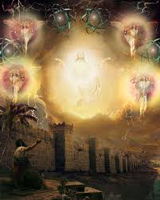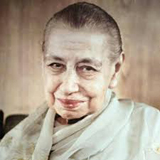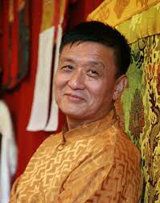Consciousness and health
The transcendent function of dreams
Abstract
This article explores the importance of night-time dreams and how paying attention to them can help us in many ways.Dreams prepare us for survival; they heal us physically and psychologically; they guide us in our spiritual journey. Dreams have been studied by spiritual schools; they are used by medicine healers. Psychotherapists use dreams to understand their patients, and through dreams the patient can get clues to heal him. This paper concentrates on how dreams accompany us in our inner journeys. Examples from spiritual traditions, Indian wisdom texts and Tibetan dream yoga are presented, along with Sri Aurobindo and the Mother’s teachings on dreams in the night-school of Integral Yoga.
The transcendent function of dreams
It is interesting that in many languages the word for night-time dreams is the same as aspiration for a better future, and the culmination of a perfect situation. There are many other words for a positive outcome, such as utopia, hope, fantasy, imagination, wish, but none of them are as charged as the word ‘dream’. Martin Luther King Jr.’s speech, “I have a dream”, will inspire people forever. There will be a dream job, a dream team, a dream house, a dream partner to wish for. I would say the word dream has a magical quality to it because in the collective experience of mankind, night-time dreams have inspired people to strive for a future that is grand and fantasy-like, almost ungraspable. Songs, speeches, poems, stories that have become cultural treasures abound in dreams, such as Alice in Wonderland. In many myths a dream ushers in a big change; it marks the turning-point in a person’s life. Coleridge’s Kubla Khan, a poem descended in a dream, has retained its dreamlike quality. Mary Shelley dreamt of the Frankenstein story, which is a warning for all of humanity from the collective unconscious.The chemist Kekulé dreamt of the structure of benzene (1).
These dreams that open up a new door in our psyche and gift us new insights are called big dreams. Kelly Bulkeley, in his book, Big Dreams: the Science of Dreaming and the Origins of Religion, puns on the word ‘dream’ when describing big dreams:
“The influence of these dreams is more a matter of stimulating people’s capacities for hope and imagination, envisioning possibilities beyond the limits of present reality… Being able to dream the impossible is what makes humans human (2).”
In this paper, I will concentrate on numinous dreams; dreams that take us closer to our Self. They play the transcendent function; they light our way to the wholeness of our being. Paying attention to one’s dreams; journaling them; interpreting them; bringing out meaning from them; and finally honouring them in different ways, such as in rituals; work as a feedback mechanism on dreams. Our dream-recall increases; our dreams become clearer; they start helping us. This opens up a channel of communication with the unconscious world. It is as though a personal guardian starts talking with us using dream-language.
Tibetan Buddhism has an esoteric teaching of dream yoga that is passed down orally from master to pupil from before the eighth Century CE. Tenzin Wangyal Rinpoche wrote a book about this dream yoga for English readers, where he says the “The goal of dream practice is liberation (3).” He follows it up by stating that dreams are useful even before they can be used as liberation aids. “We can heal wounds in the psyche, emotional difficulties that we have not been able to overcome. We can remove energetic blocks that may be inhibiting the free circulation of energy in the body. And we can pierce obscurations in the mind by taking experience beyond conceptual boundaries and limitations (4).”
The symbolic language of dreams
The Jungian analyst, Robert Johnson, states, “All of human life is nourished by the flow of symbolic imagery from the wellsprings in the unconscious (5).” Dreams that spring from the vast ocean of the unconscious, speak to us in symbolic language. Symbols are holograms. Every angle yields a new meaning. You can work with a dream image that is alive for you, years after you have had it. And every time you work with the dream, you discover new meaning. Because dreams offer images and not meanings to the images, one can look at the image from various angles, draw out personal associations, cultural associations, archetypal and mythological associations, not just from one culture, but the world over.
Dialoguing with our dream
Not only is dreamwork an exercise of associations, a dream can be passed through the prism of language and be processed as a dialogue, for language too hides symbolic clues. Psychologist Erich Neumann says, “And because the symbol-forming process of the unconscious is the source of the human spirit, language, whose history is almost identical with the genesis and development of human consciousness, always starts out as a symbolic language (6).” This is why dream analysis asks us to pay attention to the words we use to describe dream objects. If we hear proper names of people and places, they are important clues; just as images and their size, colour, texture and positions are.
We can ensoul a dream object or dream personality by dialoguing with it, using active imagination. We can ask it why it showed up in our dream. Why it did what it did. What is it feeling, what does it need from us?We speak as the dream object; then we return to our dream-ego, and speak as our self. We allow full freedom to the dream object. Kaplan-Williams shares the magic of dialogues in his chapter called ‘Dialoguing with dream images’:
“What an exciting possibility it is not to have to always try and be in control of everything, but to be able instead to follow, to work with, to create together a life direction superior in meaning to anything the ego can consciously manufacture itself! (7).”
It is hard to believe that a person can switch back and forth between personalities and not force an answer from the ‘other’. Yet it works, and with practice, one gets better at bypassing the observer-commentator ego and letting the active imagination unfold. There is a psycho-spiritual reason for the success in dialoguing, as Kaplan-Williams explains:
“From my own experience and as well as other’s experiences, I can say that dreamwork is soulwork. That somehow, somewhere there is a more central part of ourselves than we usually know who welcomes the chance to speak to us….
“A dialogue is a relationship between a known and an unknown. Dialogue penetrates mutual isolation. We have the choice to listen perpetually only to our known selves, or to take the leap towards a relationship with the stranger who stands in the corner waiting for us to wait no longer. Every dialogue is a reach into the unknown where we listen to more than the echo of our own solitary being (8).”
Taxonomy of dreams
Dream experts in all cultures have paid special attention to dreams as a means for reaching a non-ordinary state of consciousness. Dreams have been interpreted by spiritual masters, medical healers, medicine men, shamans and oracles. Various classifications of dreams have been done by many dream specialists. Let me classify them in three categories by the roles they play in our lives. At the basic level, they prepare us to survive by providing us with: prospective warning dreams; making us practise fight, flight, falling; urging us to propagate our genes; enhancing our creative faculty; providing solutions to problems. In the second level, dreams heal us — psychologically, physically, in our relationships with others and the earth. Lastly, dreams help us connect with our spiritual essence.
The healing power of dreams
Often people who have a physical ailment get clues of their healing from dreams. In a sense, we all seek healing, physical or psychological. Dreams use various means to bring our healing into focus. They show us how we can compensate for our deficiencies. When they need our attention, they dramatise and exaggerate. When they want us to follow our hunch, parallel dreams corroborate our hunches. The animus and shadows show up in our dreams asking us to integrate them. The ancients respected the diagnoses and cures suggested by the unconscious. Johnson goes a step further and states that the healing we receive from the unconscious heals not just our own individual psyche, but all those around us and the natural habitat we live in: we find that the unconscious connects us to other people and to our entire environment; therefore, when we focus a great deal of energy within the inner world, a parallel energy often arises in the people or situations around us. In this way we can heal through our inner work that we never could have done through external means (9).
The question is: can we cultivate faith in the unconscious healer? Placebo research has helped to demonstrate that, “Finally it is Faith that cures (10)”. This was the message given by the Mother of Sri Aurobindo Ashram to the Ashram Dispensary. Our ancestors knew this well. Faith works irrespective of our religious inclinations.
Spiritual guidance from dreams
The third function of dreams is the transcendent function. Dreams become our spiritual guides. A person who has reached a level of consciousness where she can tap into dreams for spiritual guidance will also see survival and healing dreams. For her, dreaming will become as important as waking life, or perhaps even more. Some cultures have given primacy to dream-life, such as the Tibetan culture. Tenzin Wangyal states:
“Most Tibetans — high spiritual masters and simple, ordinary people — consider dreams to be a potential source of both the most profound spiritual knowledge and of guidance for everyday life. Dreams are consulted to diagnose illness, for indications that practices of purification or clarification are needed, and for indications that relationships to deities and guardians need attention(11).”
Dream yoga in Indian spiritual traditions
In the Integral Yoga laid down by the spiritual masters, Sri Aurobindo and the Mother, dreaming is an important aspect of sādhanā, the yogic practice. In the Mother’s conversations, as recorded by her disciples over decades, often she describes her dream experiences. She does not call them dreams, to distinguish between her conscious experiences and unconscious dreams. After Sri Aurobindo’s passing in 1950, the Mother would report how he talked to her about their yoga in her dream experiences. She recounts one of her dream experiences in 1970 where a dream event indicated a profound change in the real world:
“Not last night but the night before, for the first time I saw — it was the first time — Sri Aurobindo drove the car. He was driving the car, I was there right behind him, and then the whole world seemed to be there. But between me and Sri Aurobindo, that is to say, between the world and Sri Aurobindo, there was what looked like one of those screens at the front [a windshield], but it was a mat so that one couldn’t see through. I myself could see, but the others couldn’t, and I saw Sri Aurobindo at the wheel, and he was the one who was driving. He was… ageless, with an extraordinary power, and a MASTERY in the driving, extraordinary! And it was as if… he were beginning to drive the world.
“I said to myself, ‘How come …?’ It’s the first time. I see him almost every night, but always busy, going here and there, doing this or staying still or seeing people, or apparently doing nothing. But here, he was driving the car — it was the car of the world — and there was a screen so people wouldn’t see it was him.... The whole, entire world was at the back, and people didn’t know, but it was driven with extraordinary sureness and speed.
“When I woke up, I had the impression that something had really changed. It’s obviously the coming of the centenary [in 1972].... Still, there was a screen, but he was the one who was driving.
“Now I understand my vision. It was that force, that power in him… it was tremendous (12).”
The Mother would frequently ask her disciples how they were faring in their dream-lives. Once a disciple asked if something she had seen was possible and where had she been in her dream.The Mother replied:
“Mon petit, EVERYTHING is possible, and not only possible: everything is. But everything isn’t on earth, of course. You understand, there are many worlds, many regions — there is nothing that is impossible and that isn’t: if a thing is possible, it means it exists somewhere…
“It must be a region intermediary between the most material physical, vital and mind. There’s everything imaginable, you can see the most extraordinary things. And that’s how it is. Strangely, even, you have a power there: one drop of truth has a tremendous power in those worlds. With a single movement you can change lots of things. Only, of course, you also create them in the same way: the contrary movement, the movement of ignorance (all the movements of ignorance in the world) create things all the time. That is to say, it means shaping things, or making them active, or having them act.... Only, it’s a reality which … which is impermanent, to begin with. Ultimately, very few forms — forms or thoughts — have an eternal reality: all that (Mother makes a gesture of perpetual recasting) is constantly moving and changing (13).”
The Mother’s and Sri Aurobindo’s teachings on sleep and dreams are compiled in a book titled The Yoga of Sleep and Dream: The Night-School of Sadhana. Sri Aurobindo says:
“Sleep changes into an inner mode of consciousness in which the sadhana can continue as much as in the waking state, and at the same time one is able to enter into other planes of consciousness than the physical and command an immense range of informative and utilisable experience (14).”
In the Indian wisdom texts, the dream world is treated just as real as the world of the awakened state. The Mandukya Upaniṣad says the Self is four-fold. The four are: the waking person, the dream person, the deep sleep person, and the fourth indefinable person. The waking self eats gross food and is the initial and pervasive one. The dream self is the inhabitant in the Luminous Mind; he eats subtle food. His characteristics are advancement and centrality. The third is the Lord of Wisdom, eater of delight, who has become Oneness. With the quality of advancement the dream self helps the individual advance in his life’s journey. With centrality it bridges the waking and deep sleep states by holding these two ends from a central position. The two movements it assists are the forward movement of the individuation process and the inward exploration, that psychologist Erich Neumann calls ‘centroversion’.
The Brihadaranyaka Upaniṣad describes the process in which the dream body, or the subtle body of the inhabitant of the Luminous Mind, gets its subtle nourishment: the path on which they [the souls] move from sleep to waking is the nerve that goes upward from the heart; it is like a hair split into a thousand parts. In the body there are nerves called hita, which are placed in the heart. Through these the essence of our food passes as it moves on. Therefore, the dream body receives finer food than the gross body. (15).
In subsequent verses, the Upaniṣad describes how the Self journeys from the gross body to the dream realm, how he constitutes the subtle body:
“And when he dreams, he takes away a little of the impressions of this all-embracing world, the waking state, himself makes the body unconscious and creates a dream body inits place, revealing his own brightness by his own light — and he dreams. In this state the person becomes self-illumined.(16).”
“The effulgent infinite being, the purusha, who travels alone, makes the body insensible in sleep but himself remains awake and taking with him the luminous particles of the organs, watches those which lie dormant. Again, he comes to the waking state (17).”
“The effulgent infinite being, the purusha, who is immortal and travels alone, guards the unclean nest, the body, with the help of the vital breath, the prana, and himself moves out of thenest. That immortal entity wanders wherever he likes (18).”
Tibetan dream yoga
In the tradition of Bon Buddhism, dreams are so important that the teacher decides what he should teach a student by asking him to relate the previous night’s dream. Some students are not admitted to the monastery, some are given purification rites before the dream test is taken again. Tenzin Wangyal states, “Information from the unconscious is often of greater value than the information the conscious mind can provide (19).” The master guides the student through dream activation processes that admits him in the night school. He can access wisdom teachings that he gets as a download every night, serially. Tenzin Wangyal describes these nightly teachings:
“Volumes of teachings have been ‘discovered’ this way, including many of the practices that Tibetans have been doing for centuries. This is what we call ‘mind treasure’. Imagine entering a cave and finding a volume of teachings hidden inside. This is finding in a physical space. Mind treasures are found in consciousness rather than in the physical world (20).”
Tenzin Wangyal recounts that once he saw a disturbing dream he could not interpret but thought it was related to his up-coming trip. Before cancelling his trip, he went back to sleep. He entered his dream, became lucid, and went to his master. He presented the dream to the master, who interpreted it for him (21). In another instance he asked a wise old lady to give him advice by consulting her own dream. She incubated her dream by placing an object under her pillow that had represented him energetically, his undershirt. In the morning she gave him instructions as to what to avoid and what to do, as indicated by her dream. Once Tenzin Wangyal’s master had a dream about him and told him to do a practice related to one of the guardians. It was only later when Tenzin Wangyal was saved by the skin of his teeth from a road accident that he realised how he would have died had there not been a guardian spirit watching over him (22).
Impact of numinous dreams
Sleep yoga can complement the yoga of our awakened state. Dreams are an important aid because they are our biggest portal to the transpersonal world — the world of gods and archetypes, the realm of the unconscious. Some deep experiences can make new persons out of us;they can change our relationships with others; they can uproot our belief-system and set us on a new journey. These rare experiences could be dreams. In the dream world we have a greater degree of freedom. We are not localised in space and time — we can travel to distant pasts, to distant lands, some of which do not exist in the physical world. Time itself does not follow the even-paced dictates of Chronos, but dilates and contracts in a playful Kairos mood. Sometimes we wake up with dried tears in our eyes. We may not recall the dream, but it has left soft butterfly memories deep in the psyche, that will flutter in us, perhaps forever.
References
1. Valli, K, Hoss R (eds). Dreams: Understanding Biology, Psychology and Culture. Santa Barbara, CA: Greenwood; 2019, pp. 304-06.
2. Bulkeley, K.Big Dreams: The science of dreaming & the origins of religion. New York, NY: Oxford University Press; 2016, p. 210.
3. Wangyal T. The Tibetan Yogas of Dream and Sleep. Ithaca, NY: Snow Lion Publications; 1998, p. 53.
4. Ibid.
5. Johnson, R. Inner work: Using dreams and active imagination for personal growth. New York: Harper Collins; 1986, p.20.
6. Neumann, E. (1955). The Great Mother. Princeton, NJ: Princeton University Press. p. 17.
7. Kaplan-Williams, S.The Jungian-Senoi Dreamwork Manual. Journey Press; 1980; p. 116.
8. Ibid., 119-20.
9. Johnson R. Inner Work, p. 105.
10. The Mother, The Collected Works of the Mother , Volume 15. Pondicherry: Sri Aurobindo Ashram Trust; 2005, p. 159.
11. Wangyal T.The Tibetan Yogas of Dream and Sleep, pp. 53-54.
12. The Mother. Mother’s Agenda, Volume 11.Paris, France: Institut de Recherches Evolutives; 1979 (English translation), pp. 31-32.
13. Ibid.
14. Sri Aurobindo. The Complete Works of Sri Aurobindo, Volume 31. Pondicherry: Sri Aurobindo Ashram Trust; 2014, p. 438.
15. [Online] Available from: https://upanishads.org.in/upanishads/12 [Accessed 30th May 2020].
16. Ibid.
17. Ibid.
18. Ibid.
19. Wangyal T. The Tibetan Yogas of Dream and Sleep, pp. 11-12.
20. Ibid., p. 12.
21. Ibid., p. 57.
22. Ibid., p. 62.
Lopa Mukherjee is a writer and documentary maker of educational and spiritual topics, and is a psychology student in San Francisco, California.
Share with us (Comments,contributions,opinions)
When reproducing this feature, please credit NAMAH,and give the byline. Please send us cuttings.









